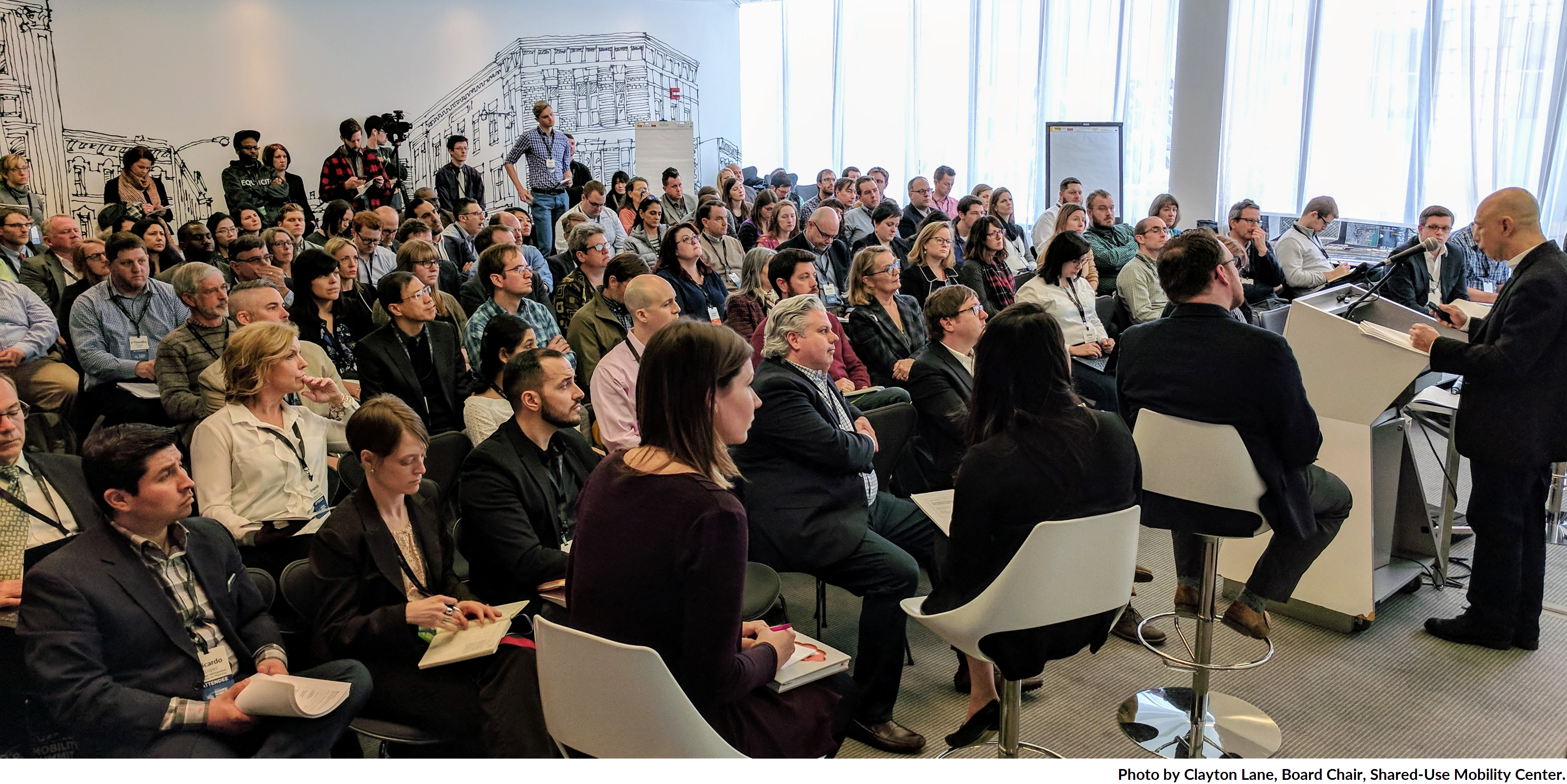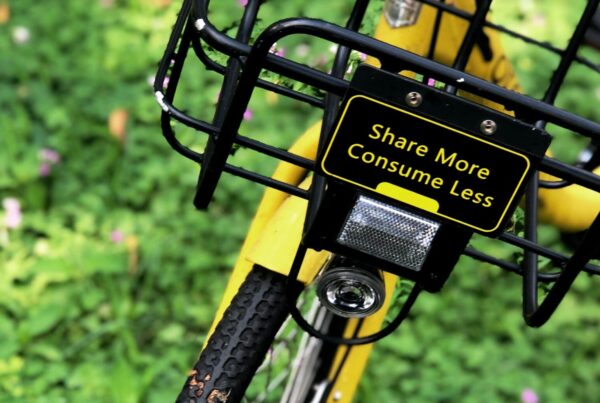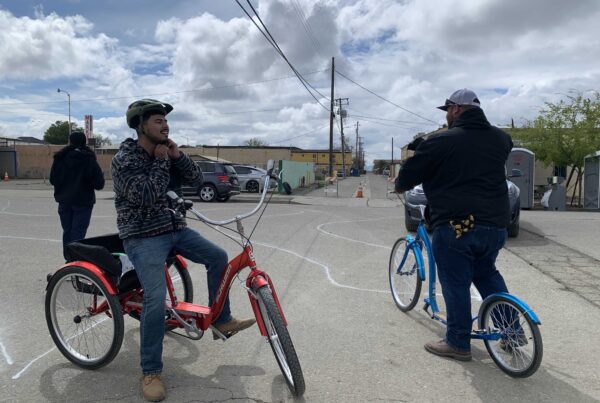Here are SUMC Executive Director Sharon Feigon’s thoughts on some of the most important takeaways from the 2018 National Shared Mobility Summit:
Ride-hailing companies’ role is evolving from disrupter to partner with many. At our Summit in 2015, conversation about ridehailing was about implications for taxis; then it was all about conflict with transit; and this year TNCs sent many representatives to reach out to transit agencies and cities to talk about partnerships and working together. There’s much still to be done on this front, but signs that we are moving to constructive conversation about how we address added congestion, access to the curb, and what kinds of partnerships can work. In two different well-attended sessions we dove into the big issues and practical solutions that cities and TNCs can implement in a wide variety of geographies.
Automation can have a positive impact on transit. It’s not as simple as “heaven or hell.” While there was much discussion of automated vehicles and their implications at the Summit, what really captured our attention was the potential to capture the cost savings of automated transit to improve bus frequency and routing, providing a viable path for enhanced services for underserved riders and improvements to transit systems in general. And there was a buzz that FTA might encourage pilots that include transit automation. Along with this excitement, we must be vigilant in hearing from workers and their advocates to understand and address the workforce impacts implicit in these changes.
Parking’s role is changing. Parking operators are reporting significant drops in parking use and revenue at parking lots in entertainment areas, downtowns, and airports because of the rise in use of TNCs for many trips that people used to drive their own cars for. Looking further forward, in our sold-out workshop on planning for the transition to shared, autonomous vehicles, we heard from Vincent Valdes, the Associate Administrator for Research, Demonstration, and Innovation at the Federal Transit Administration, as well as other experts on practical approaches for transforming streetscapes to prioritize people, using several Chicago corridors for scenario planning exercises.
New bikesharing (and scootersharing) technologies will benefit from clear public guidance. As new operational models and technologies are expanding the definition of two-wheeled transportation, we saw a clear public sector role in setting the parameters for new bikesharing and scootersharing approaches. (Yes, scootersharing–even if flocks of electric scooters haven’t hit your town yet, it’s only a matter of time.) In our Summit workshops and sessions, we heard that setting quality standards and creating dedicated spaces and corrals for parking lots of bikes are two ways that cities can proactively guide outcomes from dockless technologies. We also learned that the largest bikeshare fleet in North America is now in Dallas, with over 20,000 dockless bikes on the ground!
Carshare operators are adapting to new models. Carshare operators and automakers alike are integrating carsharing services more fully with a suite of other shared mobility options–such as car rental for e-delivery and ride-hailing drivers. In one carsharing panel we heard from key operators, legal advisers, and venture capitalists on how carsharing is anticipating and adapting in the face of an autonomous future.
Across modes, companies are moving fast. Whether a company is focusing on bikeshare, carsharing, ridehailing, etc. the industry is quickly growing and changing. Many companies that once focused on providing a single service or mobility product are becoming more mode agnostic and offering a suite of services to be competitive, and many companies are merging or being acquired by automakers. The first signs that Mobility as a Service–the integration of modes, fare payment, and mobility packages–could truly become an option in the US in the near future.
Mobility is no longer just a buzzword for automakers. In our Wednesday lunch plenary, a panel with automakers and some of their new mobility offshoots, we learned that across the world, OEMs are discovering how to build new mobility into an important part of their revenue strategy, rather than just a marketing bauble. These automakers are learning how to capture value and revenue from shared mobility, and the potential is that these companies could commit to a new sustainable transportation system.
Cities are moving into the role of mobility brokers and conveners. Across the country, large and small cities are hiring mobility and innovation managers. On top of this, the federal government is creating new mobility metrics to gauge the success of mobility experiments in ways that reflect a new multimodal reality. In our workshop for MOD Sandbox grantees, held alongside the Summit in partnership with the Federal Transit Administration, we surfaced some ways that transit agencies and cities can navigate this new role and support a multimodal ecosystem.
Transit agencies are evolving their service models in response to pilot outcomes. This year’s summit had a strong presence from transit agencies who are embarking on the challenge of turning their innovative pilots into long term programs. From our opening plenary sessions, we learned how the Kansas City Area Transit Authority is looking to transition successful pilot to improve their day-to-day operations, and in our popular “Developing and Implementing Shared Mobility Action Plans” workshop, we heard from the Twin Cities’ Metro Transit about how the region’s new action plan helps guide the agency’s pilots toward the establishment of long-term programs.
Equity is achievable, change is possible. Inspired by current political events, we wanted to end on a note that with fresh ideas and new voices, change is possible. Through shared mobility we are working towards greater transportation equity. At its core, equity is about creating more options for people who have few. From keynote speaker and KCATA CEO Robbie Makinen, we heard that “change happens when you leave your comfort zone.” At SUMC, we believe this is true, and through our innovative work across the country, we are helping cities, transit agencies, and the federal government leave their comfort zone and embark on exciting and boundary-defining mobility experiments.
The staff and I are taking a little breather before we get back into Summit mode, but we’re going to be planning next year’s Summit soon and welcome your feedback on the 2018 event so we can make the next one even better. In coming weeks we’ll also be posting more about the great discussions that took place at the Summit. Stay tuned!




